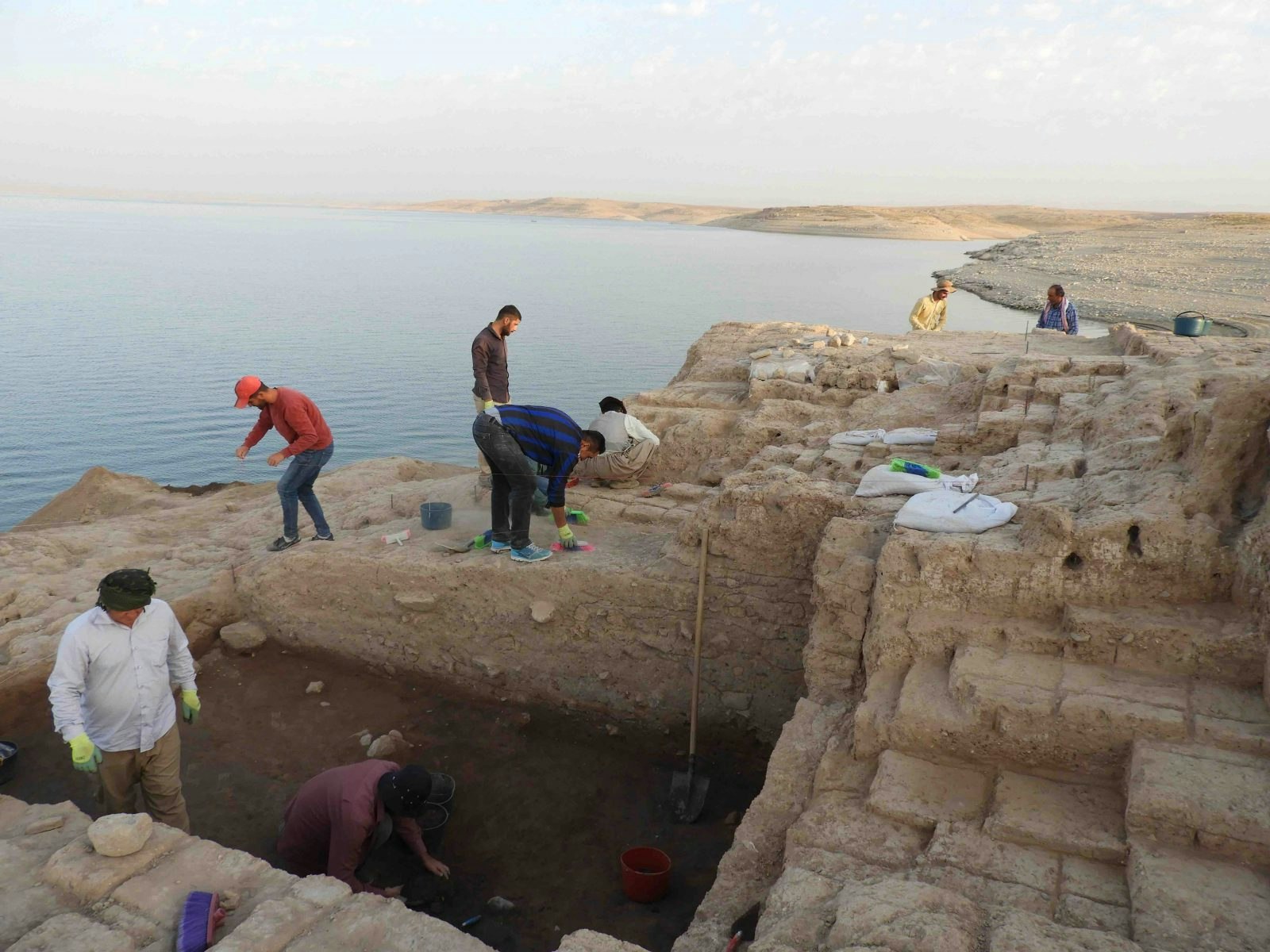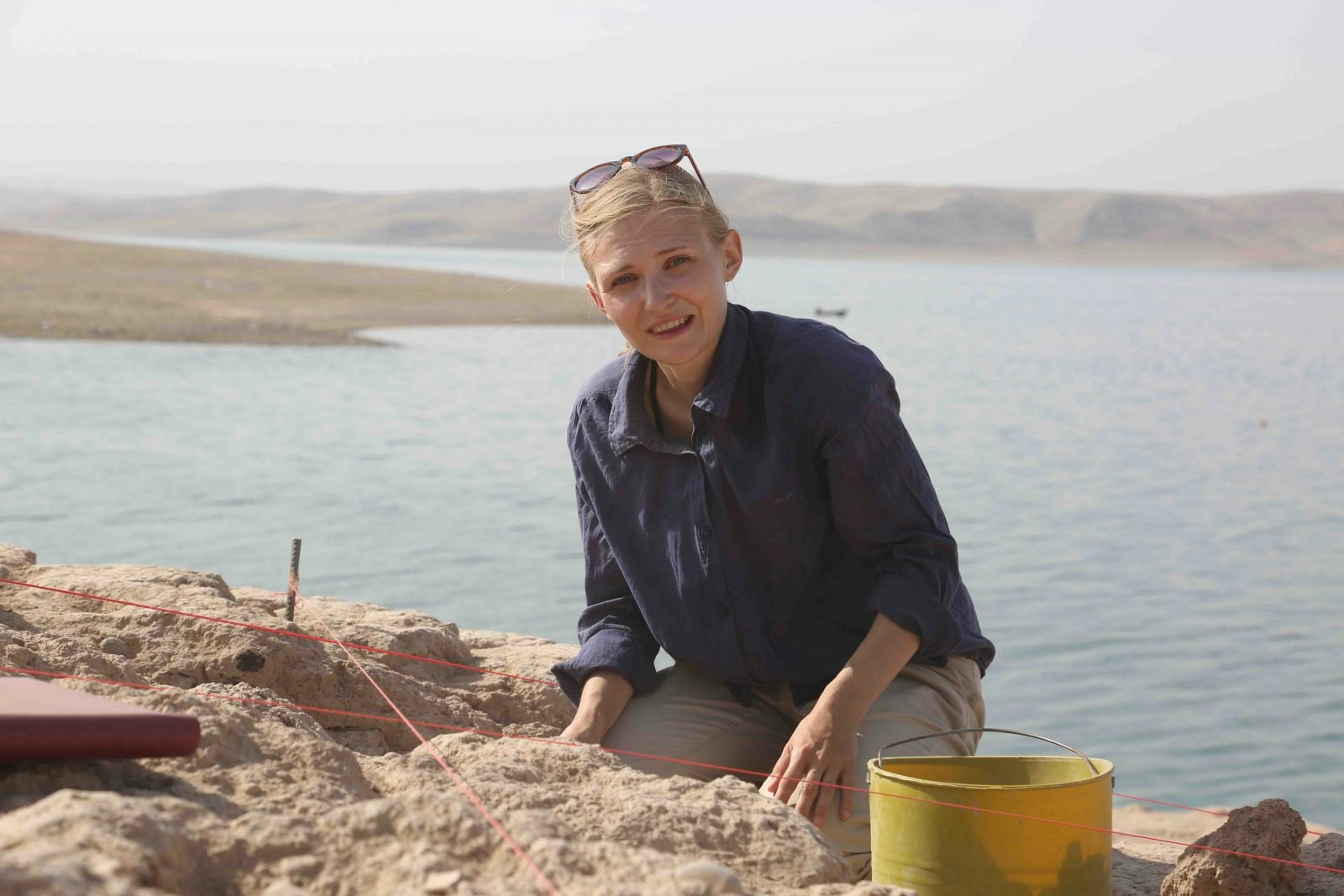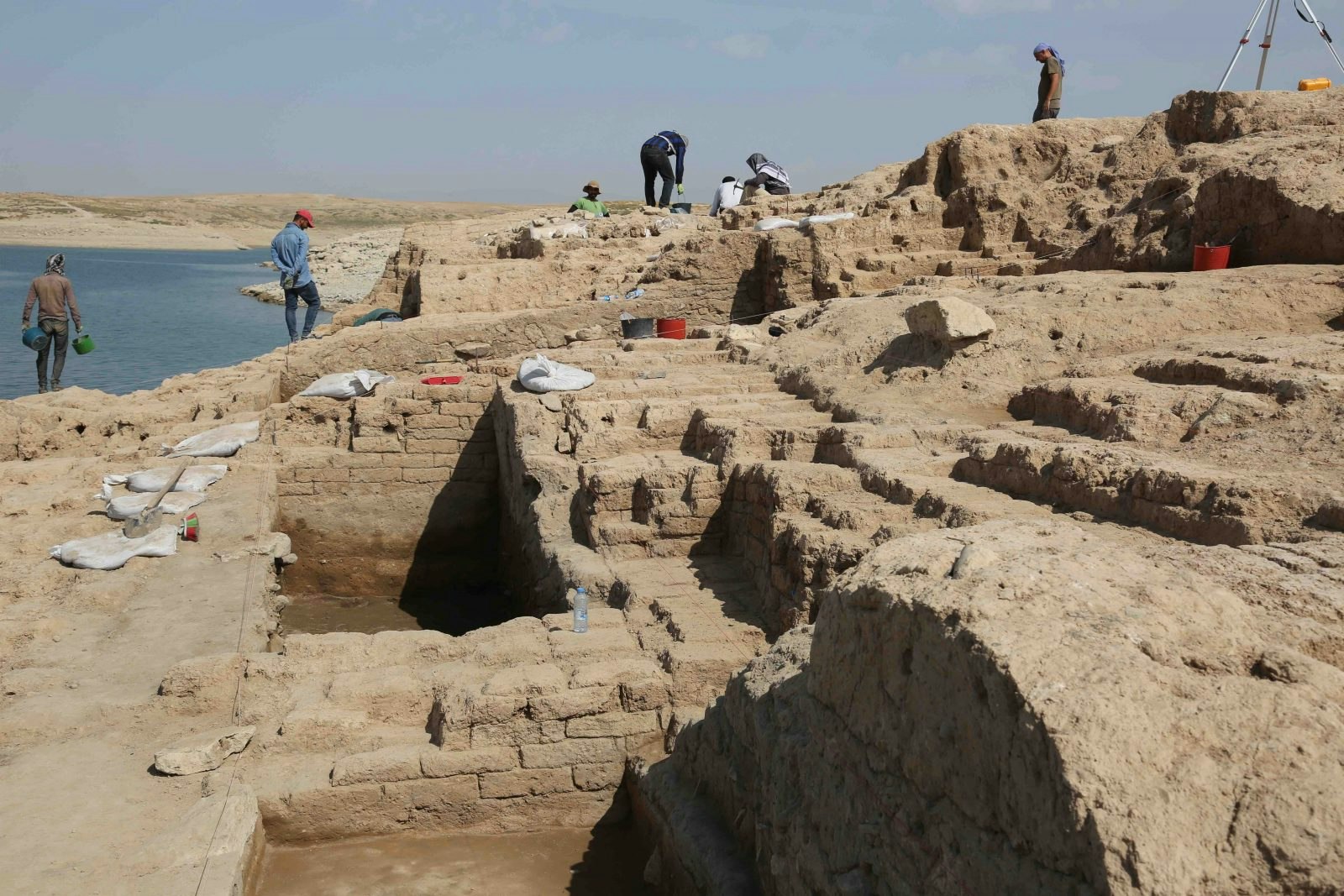Ruins of an ancient palace, believed to be part of the mysterious Mittani Emipre, have been discovered during a drought in the Tigris River.

The ruins of an ancient palace have emerged from the Tigris River.
Archaeologists have described it as a “sensation” of a discovery that could reveal new details about the Mittani Empire; a mysterious and powerful empire that stretched from the eastern Mediterranean coast to present-day Iraq between 1475 and 275 BCE at its peak.
We don’t know much about the Mittani, it’s one of the least researched kingdoms of the Ancient Near East. What we do know comes from only a handful of sites including Tell Brak in Syria, Nuzi (in present-day Iraq) and Alalakh (in present-day Turkey). But it’s hoped that 10 cuneiform tablets, discovered in the ruins, will reveal clues about its politics, economy and history.

A room in the palace during excavations.
The discovery was made in Kemune, on the eastern bank of the Tigris River, in the Kurdistan region of Iraq during a drought last autumn. Excavation teams from the University of Tübingen in Germany and the Kurdistan Archaeology Organisation are working alongside Duhok Directorate of Antiquities to learn more and describe the ruins as “one of the most important archaeological discoveries in the region in recent decades.”
The team had discovered the site of Kemune already in 2010 but they couldn’t excavate until the drought hit. Once the water had receded they found a “carefully designed building” made up of mud-brick walls up to six feet (two metres) high and six feet thick. The palace would have originally stood just 65 feet from the river on an elevated terrace that overlooked the Tigris Valley.

Dr. Ivana Puljiz
There’s little doubt that the palace was lavishly decorated, as the team discovered fired bricks that would have been used as floor slabs, plastered walls and even the remains of well-preserved wall paintings in vibrant shades of red and blue.
“In the second millennium BCE, murals were probably a typical feature of palaces in the Ancient Near East,” says Dr Ivana Puljiz, from the University of Tübingen. “But we rarely find them preserved.”

Kemune Palace from the south.
The Kemune Palace ruins should unlock important revelations about the Mittani Empire. If you’re curious to know more about the excavation project, you can watch a video of the dig here.